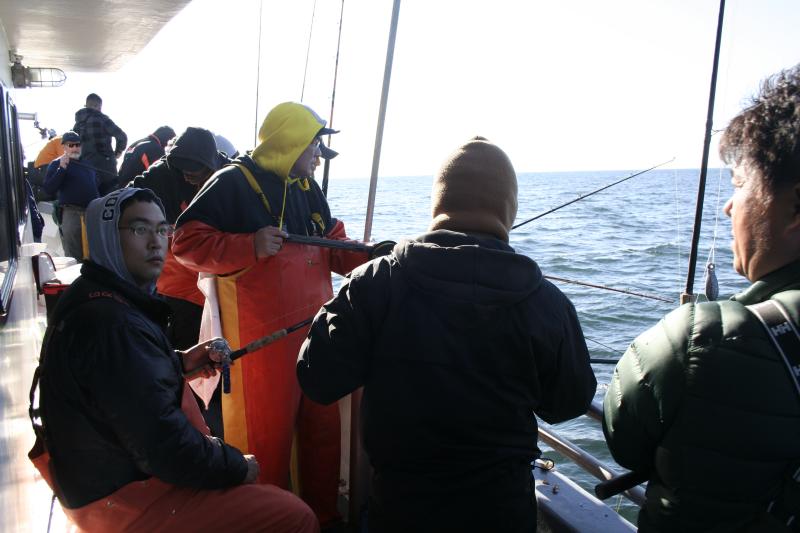Head boats are a great way to access sea bass
Right now, black sea bass action is good. One way to access them is on a head boat. I love fishing on a head boat and have been doing so for a long time. I went out on the Triple Nickle with Capt. Nichols (I believe) when the Northside Marina was just a bunch of docks and squatters’ campers and mobile homes. This was back in the 1950s when sea bass were close to shore. That was a good thing, because the Triple Nickle was just a bit on the slow side. Just above walking speed.
Today’s head boats are a bit faster. Most run around 20 knots, so you can look forward to a two-hour run to the fishing grounds. This is time well spent sleeping or getting to know your fellow fishermen. If you do get to know the other anglers, you will find they are a diverse group. I have met firemen, mechanics, farmers, EMTs, fathers and sons, mothers and daughters, and even a Dallas Cowboys fan who ended up between two large gentlemen from D.C. who were wearing Redskins gear.
Head boats also attract every nationality, race, religion, political view and lifestyle, so if you have any prejudices, you had better leave them at home or find another place to fish. I have seen a few arguments on head boats, but they always involved fishing. Who caused the tangled lines. Who had their place at the rail first. Stuff like that. Most trips are peaceful.
When you make a reservation for a head boat trip, read everything about the trip. The run may begin at 6 a.m., but the boat may start boarding at 5:30 a.m. You will want to be there and checked in well before 5:30.
Some boats will assign you a number to indicate when you made your reservation. The earlier your reservation, the sooner you can board and the sooner you can select your fishing location. A lot of old salts like to fish from the stern. There is less chance of a tangle because all lines will stream away from the boat parallel to each other when the boat is anchored. Lately, I have been fishing from the bow. My cooler is too tall to fit under the seat along the side of the boat, but fits just fine under the seat at the bow.
Before you go on a head boat, you should have your tackle in shape and ready to fish. Your rod and reel must be able to handle at least 9 to 10 ounces of weight. Have a few top-bottom rigs either hand tied or purchased from the local tackle shop. If you want to fish with jigs, be sure they are heavy enough to sink at the same speed as the sinker rigs most of the other anglers are using. Before your first drop, the mates should tell you what weight to use.
In today’s world, you should use braid fishing line on your reel. I use 30-pound Stren in bright yellow with a shock leader of 30-pound fluorocarbon line. The shock leader is tied to the running line with an Albright knot and cranked around the reel two or three times. The shock will take the abrasion for the rough bottom where sea bass live. It also allows you to still keep the advantages of braid fishing line that include much better feel from even the lightest bite and being able to tell what sort of bottom you are over. With a little experience, you will be able to tell the difference between soft mud, hard sand, rocks and metal. The thinner per pound test between braid and mono will also allow you to use less weight to reach the bottom.
The mates on a head boat can make the difference between a fun trip and one that is not so much fun. If the mates are right there when you get hung up on the bottom, get in a tangle, hook a big fish or otherwise find yourself in need of assistance, then they are worth their weight in gold. If, on the other hand, they only show up to collect the pool money and then at the end of the trip with their hand out, leave that hand empty.
The general rule for tipping mates is at least 20% of the cost of the trip. My son Roger worked as a head boat mate during his time attending Old Dominion University. Believe me, those tips mean a lot to the mates.
If you have never fished from a head boat, fall is a good time to go. The weather is cool, the sea bass should be plentiful and you will have a great time.












































